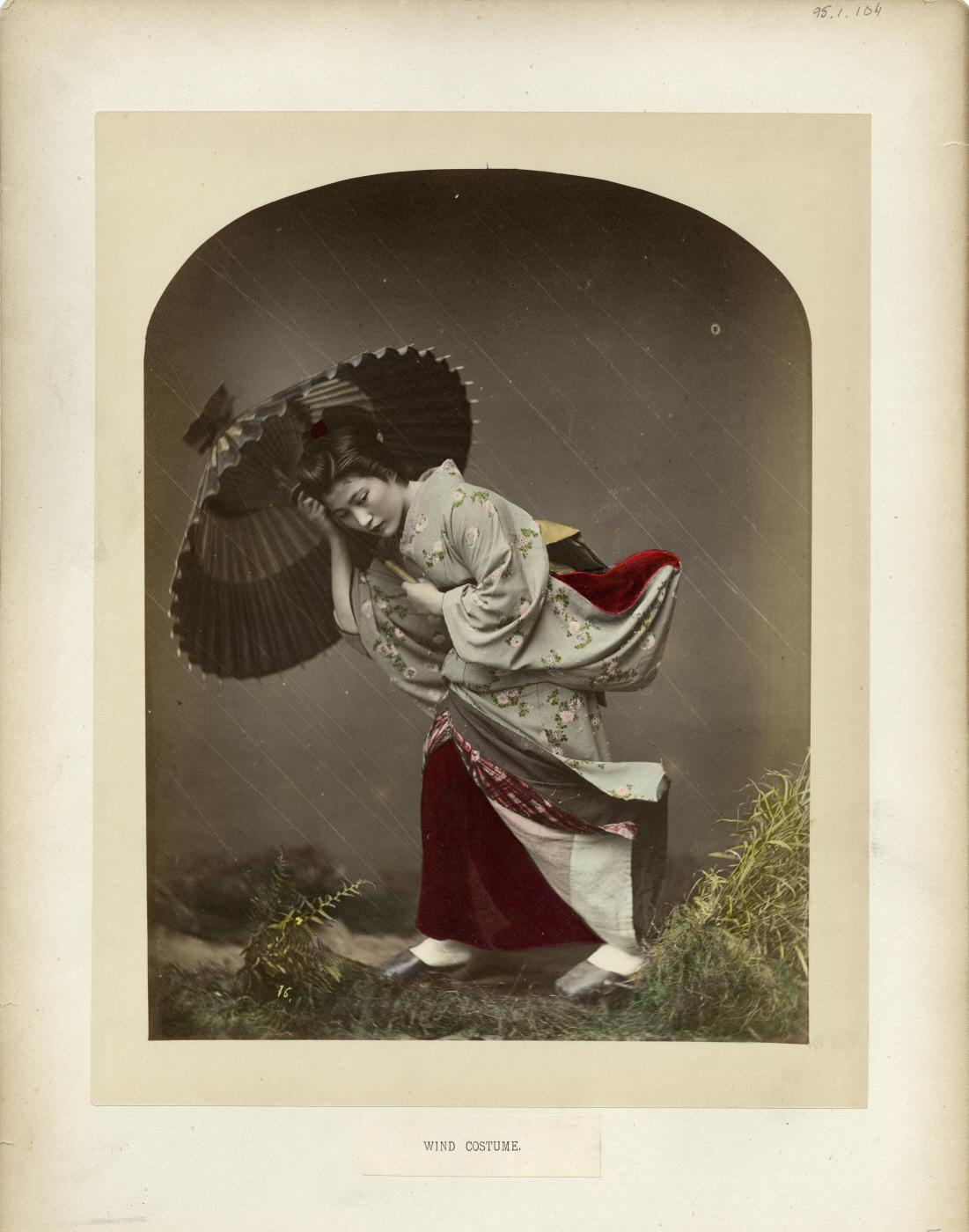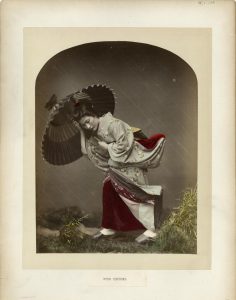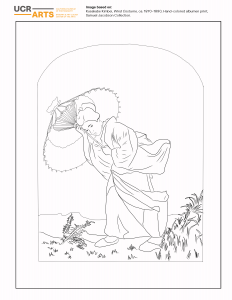Download Coloring Sheet
Pretend you are a 19th Century colorist, an artist who added color to monochromatic (black and white) photographs, when you color this image based on Kusakabe Kimbei’s Wind Costume.
In the early days after photography was invented, photographers offered sitters (people who posed for photographs) the option of adding color to the surface of the image, typically for an additional charge. It was the colorist’s job was to add color to portraits to make cheeks look blushed, jewelry look gold, or liven up clothes and backgrounds.
On paper-based photographs like this one, colorists painted thin layers of watercolor, adding color either just in certain areas for a pop of color or all over the picture. This was especially popular in Japan, where photographers made elaborately hand-colored photographs for tourists (people who visited Japan from other countries) to purchase.
Kusakabe Kimbei (1841-1934) was a Japanese photographer who ran a studio that catered to mostly tourists. He created studio portraits (portraits are pictures of people) like Wind Costume that frequently portrayed women in the traditional Bijinga (“beautiful person picture”) style. Bijinga was a typical subject used in the Ukiyo-e genre woodblock prints and paintings which depicted idealized women, kabuki actors, sumo wrestlers, and more.
You can see more of Kusakabe Kimbei’s photographs in the California Museum of Photography’s collection in our emuseum.



